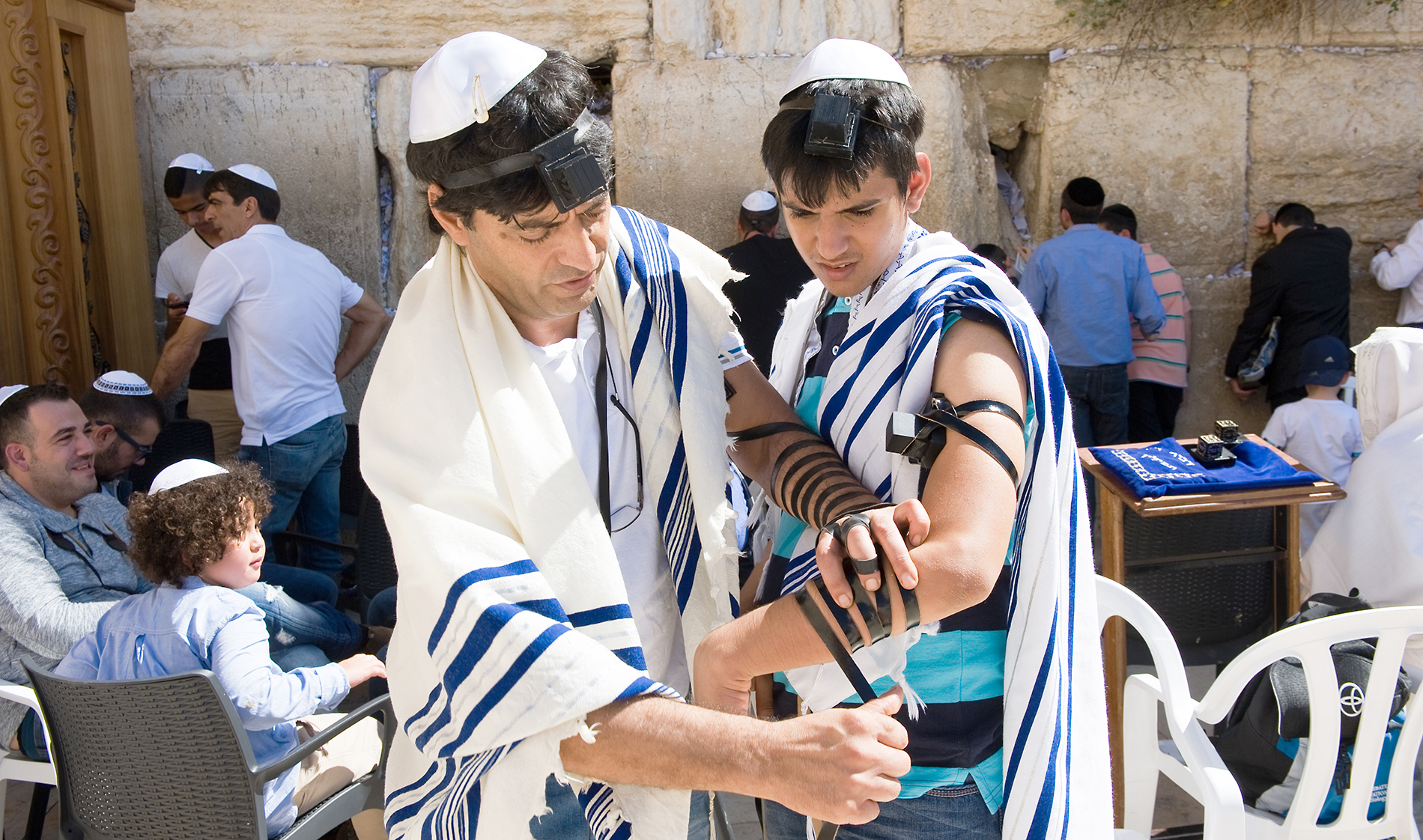
Bible, History, Archaeology
Bible,
History,
Archaeology
The chema,
divine oneness
Contents:
Watch the video – Presentation text
Video from the program «À l'origine» hosted by Steve Suissa on France 2. With the participation of Channa Cohen, teacher, and Michaël Azoulay, rabbi © France 2.
The Shema Israel is without doubt the most important Jewish prayer. Recited twice a day, it is the rhythm of the Jewish faith. It is taught to children and recited before death. It affirms that God is absolutely ONE. It's an extremely complex notion to understand, and one that the entire Jewish tradition has tried to explain.
Presentation
Chema Israel (Hebrew שמע ישראל) «Listen, Israel» is found in verse 6/4 of Devarim (Deuteronomy). Chemaʿ Yisrā'ēl YHWH elohénou YHWH eḥāḏ («Listen Israel, the Eternal [is] our God, the Eternal [is] One»), from which derive a great many fundamental conceptions and practical applications of Jewish thought and cabala. How can God, who is the absolute One, at the same time conceive of himself with a creation or something other than himself, since he is one in essence and totally self-sufficient?
The Shema Israel is part of a long message given by Moses to the Children of Israel shortly before his death. Enunciated after the second presentation of the Decalogue, it constitutes the foundation of the divine message through the mouth of Moses: the God of Israel is One.
The verse of the Shema Israel, punctuated, cantilated and magnified according to the rules of the Massorah. The letters Ayin and Dalet, larger than the other characters, form the word ‘Ed («witness») or eternity (‘Ad).
The first word of verse 4, ChemA, listen, or understand, ends with the letter ayin ע which, according to tradition dating back to Moses, is larger than the other letters in the text. The same applies to the daleth ד, the last letter of the last word of the same verse, ékhaD, One. When we join these two letters, ayine and daleth, we obtain the word ’Èd, «witness» or ‘Ad «eternity». Israel is the witness in this world to the absolute unity of God, YHWH, the tetragrammaton with its unpronounceable name.
The section Deuteronomy 6/5-9 that follows the proclamation of the Shema constitutes the parashat shema (parashat = traditional unit of division of the text of the Hebrew Bible). It is the first commentary. It sets out how the commandment is to be carried out in love («you shall love the Lord your God with all your heart, with all your soul and with all your strength»), meditating on it in every place and at every hour, passing it on to your sons and making a sign of it on your hand and between your eyes by means of the tephillim (phylacteries, fragments of leather that Jews attach to their arms and foreheads) and cases in which specific passages of the Torah are written.) God requires this text to be inscribed on the lintels of the doors of homes and city gates (mezuzah).
Deuteronomy 11/13-21 repeats the message of parashat chema, paraphrasing and amplifying it. In Joshua 1/8, we again find a reminder, but more succinctly.
Several traditions attest to the application of this prescription as early as the time of the First Temple: the Temple priests proclaimed the chema Israel twice a day. The prophets of Israel themselves had visions of the proclamation of the chema, announcing a time when the God of Israel would also be the God of the Nations.


